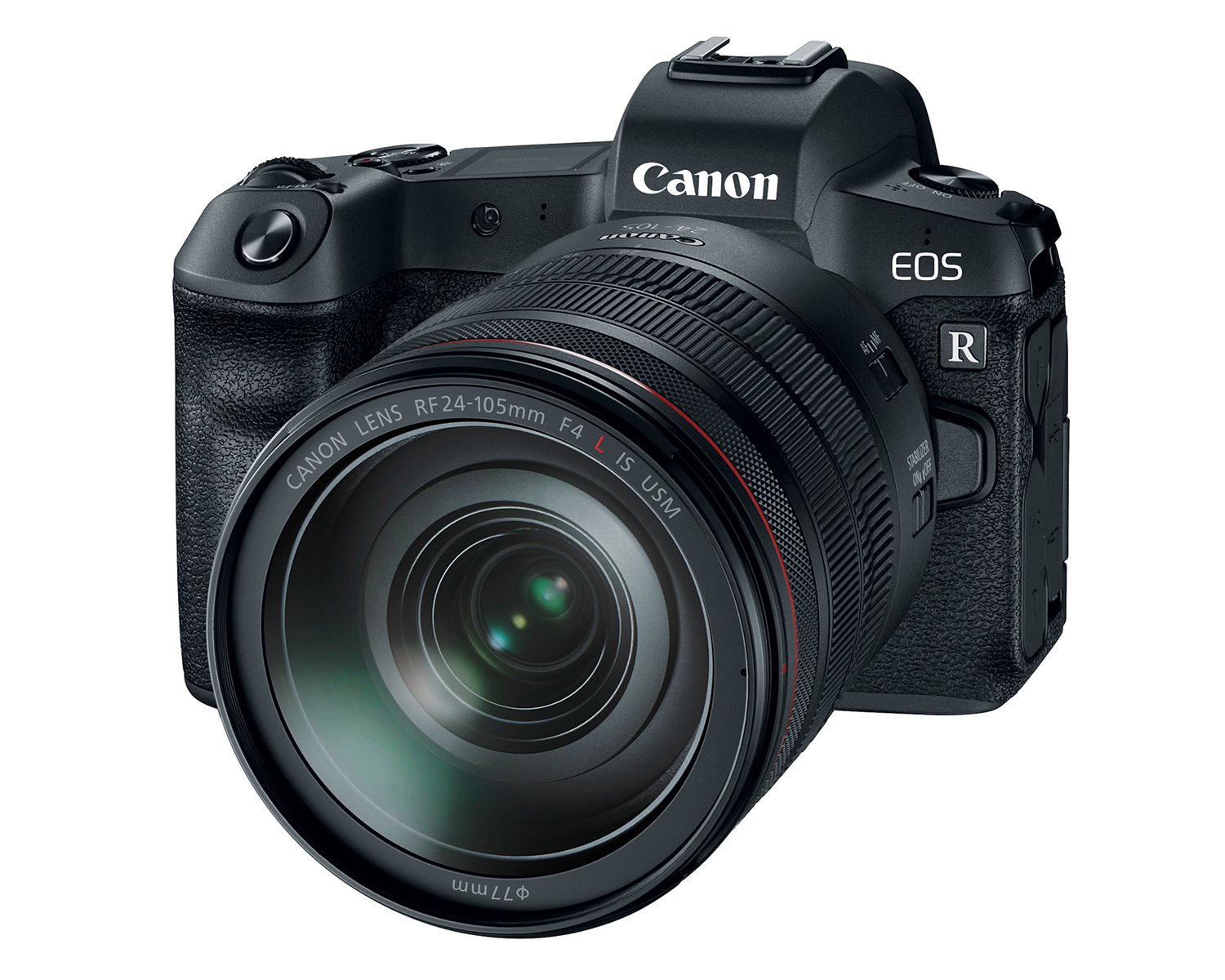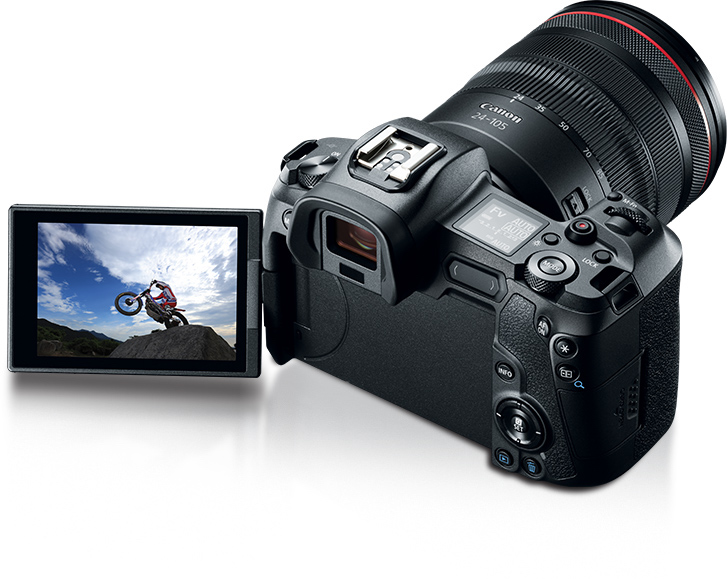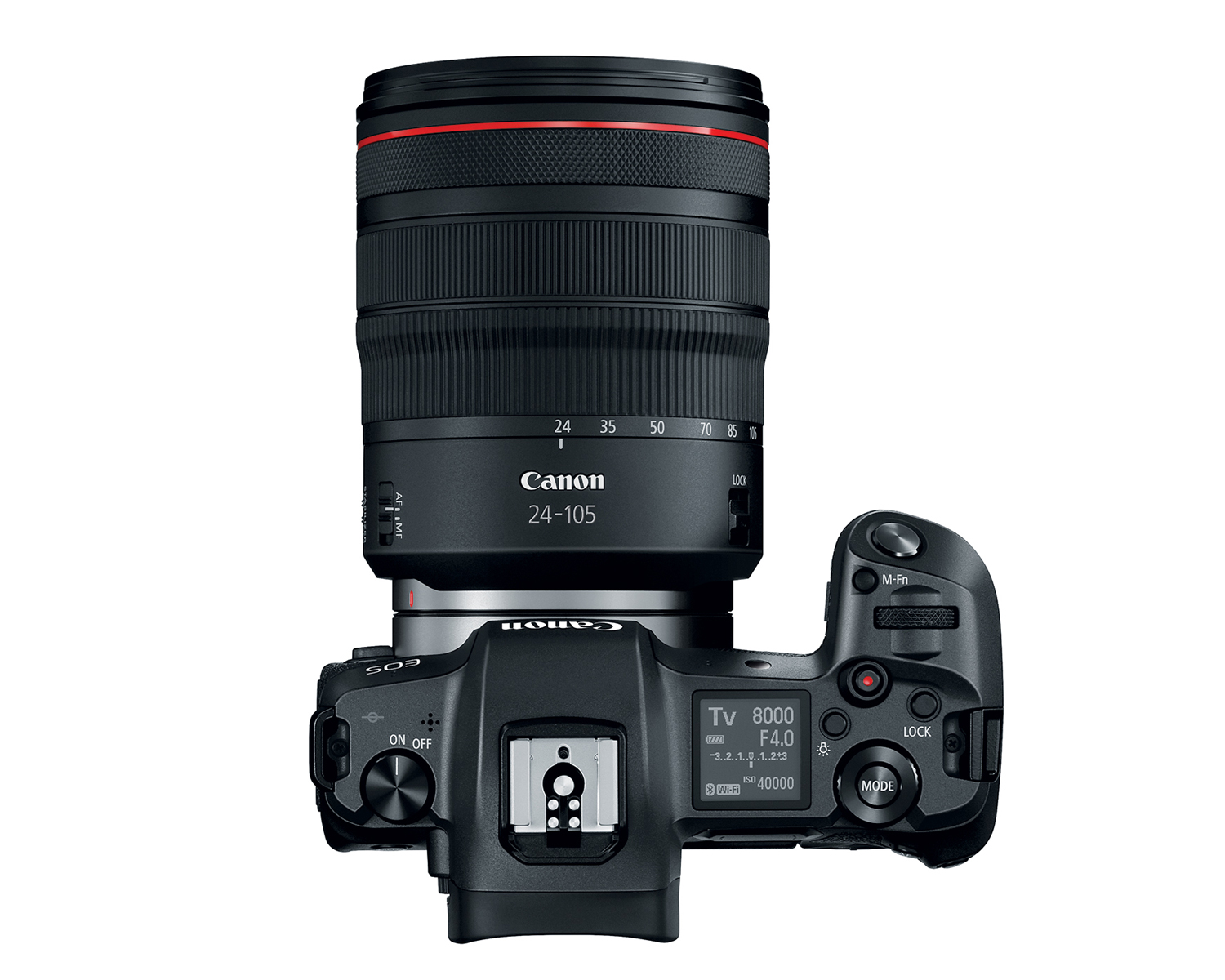Canon EOS R vs. Nikon Z6 and Z7: What Should You Buy?
How does Canon's first full-frame mirrorless camera compare to Nikon's?

Canon finally joined Nikon and Sony in releasing a full-frame mirrorless camera of its own. The Canon EOS R, as it's called, will have a 30.3-MP sensor, shoot video at up to 4K/30 fps, and have an astounding 5,655 phase detection points. The camera will be available in October for $2,299 (body only) and $3,399 with a new RF 24-105mm F4 L IS USM lens.
We've compared Nikon's cameras to Sony's mirrorless cameras, but how does Canon's new shooter stack up to Nikon's new full-frame cameras?
Canon EOS R vs. Nikon Z6 and Z7 Compared
| Canon EOS R | Nikon Z6 | Nikon Z7 | |
| Price (body only) | $2,299 | $1,995 | $3,399 |
| MP/Sensor | 30.3MP CMOS | 24.5MP BSI CMOS | 45.7 MP CMOS |
| ISO Range | 100–40000 (stills) 100–25600 (video) | 100-51200 (expandable to 50-204800) | 64-25600 (expandable to 32-102400) |
| Max Photo Size | 6720 x 4480 | 6048 x 4024 | 6048 x 4024 |
| Max Video Resolution | 4K/30p | 4K/25p | 4K/25p |
| Shooting Speed | Up to 8 fps | Up to 12 fps | Up to 9 fps |
| Autofocus | 5,655 phase detection points | 273 hybrid phase/contrast detection points (90 percent coverage) | 493 hybrid phase detection/contrast points (90 percent coverage) |
| Image Stabilization | None | 5-axis in-body | 5-axis in-body |
| Memory Card Slots | One UHS-II SD card | One XQD | One XQD |
| Viewfinder | 3.69 million (Quad VGA) OLED | 3.69 million (Quad VGA) OLED | 3.69 million (Quad VGA) OLED |
| Display | 3.15-inch LCD touchscreen (2100k dots) | 3.2-inch LCD touchscreen (2100k dots) | 3.2-inch LCD touchscreen (2100k dots) |
| Size (body only) | 5.4 × 3.9 × 3.3 inches | 5.3 x 4 x 2.7 inches | 5.3 x 4 x 2.7 inches |
| Weight (body only) | 1.3 pounds | 1.3 pounds | 1.3 pounds |
| Battery Life (CIPA) | Approx. 370 shots | Approx. 310 shots (EVF only) | Approx. 330 shots (EVF only) |
Both in terms of price and specs, Canon's new shooter falls between the Nikon Z6 and Z6. At $2,299 (body only), the EOS R is $300 more than the Z6, but $1,100 less than the Z7. Likewise, the EOS R packs in a 30.3-MP sensor compared to the 24.5-MP sensor on the Z6, but both are dwarfed by the Z7's 45.7-MP sensor.

Like Nikon's cameras, the Canon EOS R has a roughly 3.2-inch, 2100k-dot touchscreen LCD. However, while Nikon's screen can only tilt, the EOS R's display flips outward, and can be rotates vertically, making it more versatile. Also similar is the digital viewfinder, as well as the small display on the top right of the cameras, which shows such information as shutter speed, ISO, and f/stop without needing to look at the rear panel.
MORE: Best Mirrorless Cameras
With a max shutter speed of 8 frames per second, the EOS R is a slower shooter than both of Nikon cameras. However, the EOS R's 5,655 phase-detection points dwarfs the autofocus capabilities of the Z6 and the Z7, the latter of which has 493 points. Also, the EOS R shoots video at a max of 4K/30 fps, compared to just 4K/25 fps for the Nikons.
Get instant access to breaking news, the hottest reviews, great deals and helpful tips.
Another big differentiator between the Canon and Nikon cameras is that the EOS R lacks in-body image stabilization, instead relying on in-lens stabilization.

Canon is launching four RF lenses that will work natively with the EOS R. That's comparable to the three lenses Nikon is initially offering with its Z-series cameras (six more will be launched in 2019); As Sony has had a full-frame mirrorless camera for a few years, it has 26 lenses that work with its cameras. However, both Nikon and Canon are releasing adapters that will allow photographers to use a much broader selection of lenses; Nikon's F-to-Z mount adapter means that more than 90 of Nikon’s F-mount lenses can also be used with the Z6 and Z7.
While Sony will most likely continue to dominate the full-frame mirrorless market for the time being, it's good to see the top two camera makers challenge its position. It's about time, too.

Michael A. Prospero is the U.S. Editor-in-Chief for Tom’s Guide. He oversees all evergreen content and oversees the Homes, Smart Home, and Fitness/Wearables categories for the site. In his spare time, he also tests out the latest drones, electric scooters, and smart home gadgets, such as video doorbells. Before his tenure at Tom's Guide, he was the Reviews Editor for Laptop Magazine, a reporter at Fast Company, the Times of Trenton, and, many eons back, an intern at George magazine. He received his undergraduate degree from Boston College, where he worked on the campus newspaper The Heights, and then attended the Columbia University school of Journalism. When he’s not testing out the latest running watch, electric scooter, or skiing or training for a marathon, he’s probably using the latest sous vide machine, smoker, or pizza oven, to the delight — or chagrin — of his family.
-
Kevin-M For all of Canons weakness at least I can still use ALL of my old lens with it, something that Nikon, nor any other camera manufacture can boast!Reply -
m.kaplan Your spec sheet has an error. The 'Max Photo Size' ifor the Z7 is incorrect. You put the same spec as the Z6. It should be 8256 x 5504Reply
